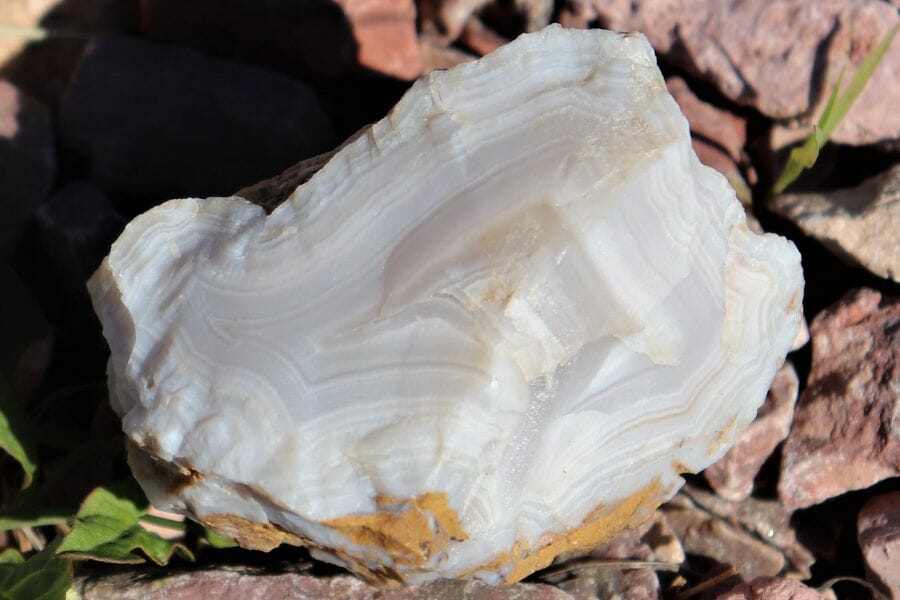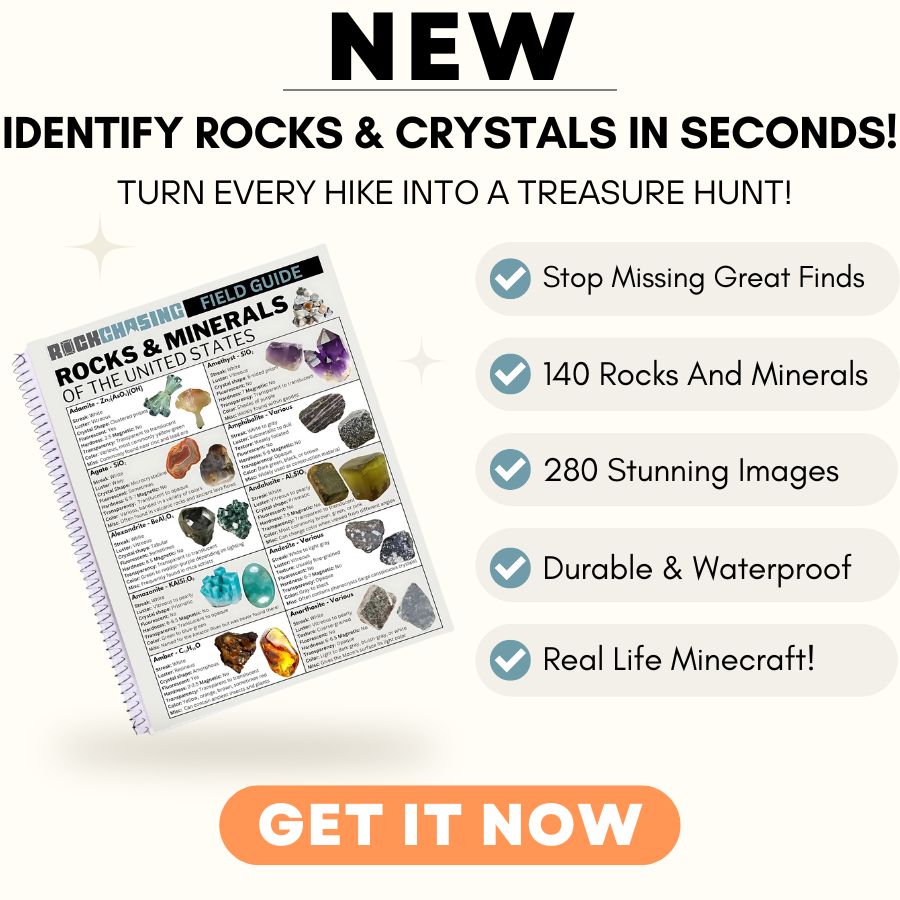Finding crystals can be a rewarding adventure, offering a unique way to explore the natural beauty and geology of the region. Whether you’re a seasoned rockhound or just getting started, knowing where to look is key to uncovering these hidden treasures.
In this state, a variety of locations provide opportunities to discover different types of crystals. From rocky outcrops in the mountains to stream beds that carry sparkling surprises, each area offers its own unique finds for those willing to search.
We can help you get started with some places you can explore for crystals below!
Crystals you can find in the US
The United States offers a wide range of crystals that reflect its diverse geology. From vibrant gems to more subtle mineral formations, there’s something to discover in nearly every region.
Calcite
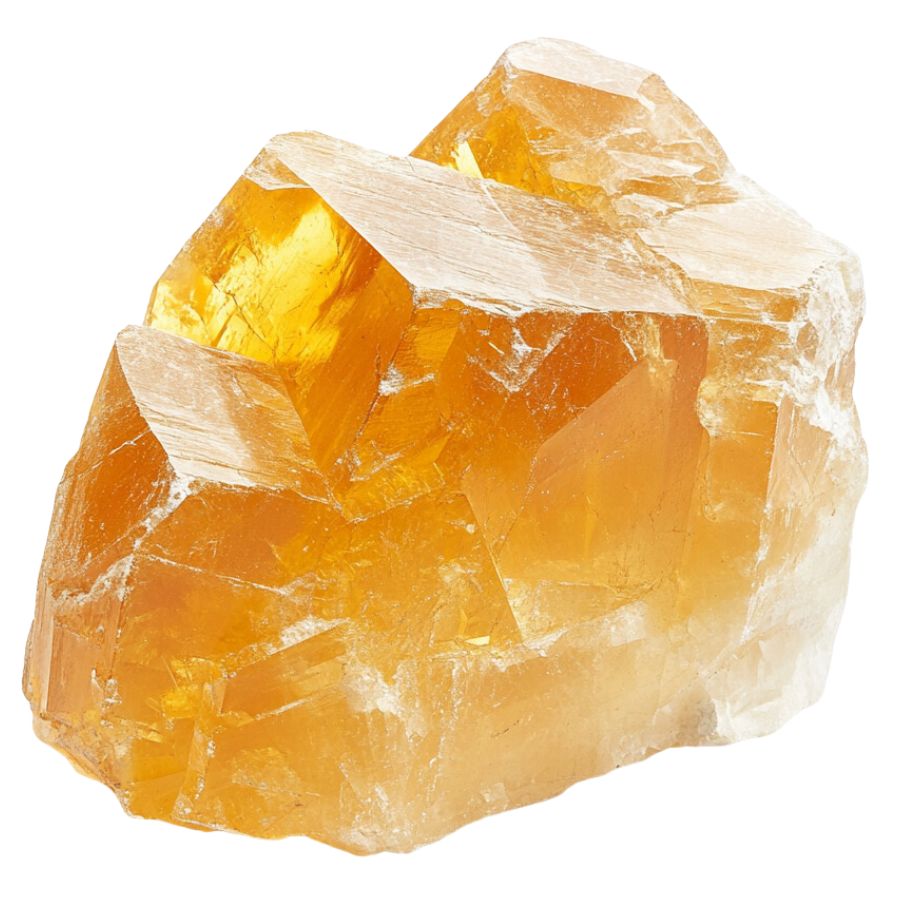
With a variety of forms and a unique property of double refraction, calcite allows objects viewed through the crystal to appear doubled. This mineral can appear in a spectrum of colors, with pure forms typically being transparent or white.
In addition, calcite reacts vigorously with acids, which aids in distinguishing it from other minerals. It also frequently contributes to the structure of sedimentary rocks such as limestone.
Gypsum
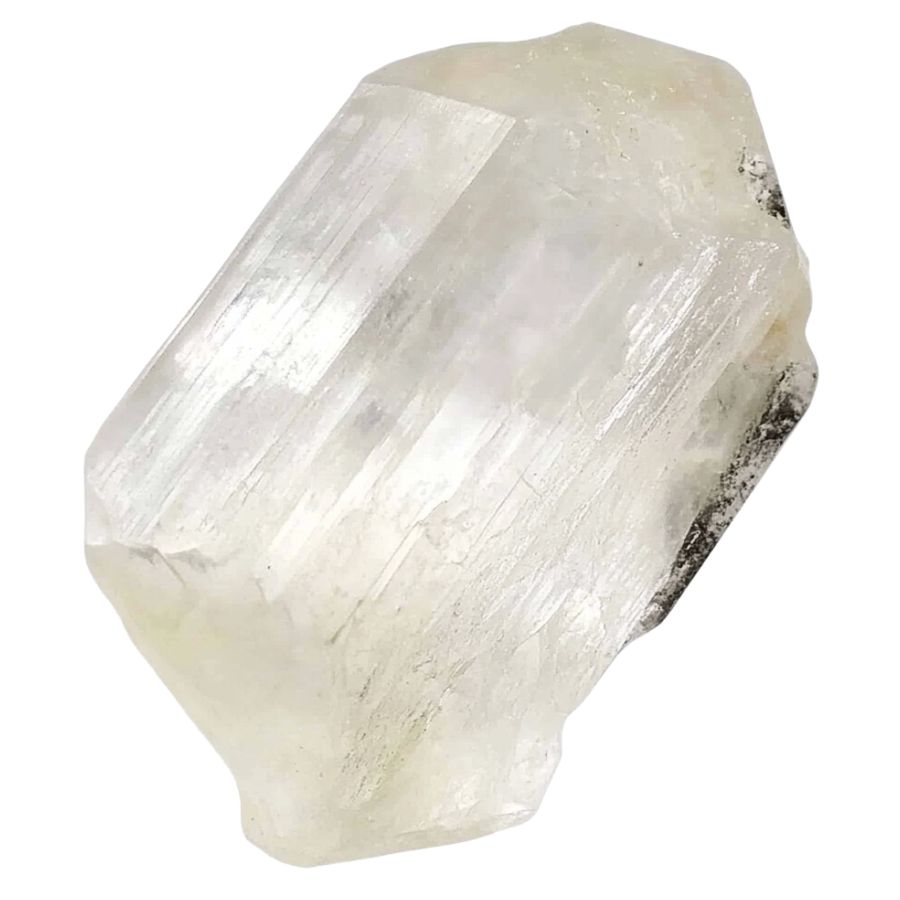
Gypsum’s notable softness allows it to be easily scratched with just a fingernail, often presenting as white or very light-colored in its pure form.
It manifests in both crystalline forms, like selenite, and massive forms such as alabaster, making it versatile in use and appearance.
Gypsum is also essential in the construction industry and is a key component in the manufacture of plaster and drywall.
Fluorite
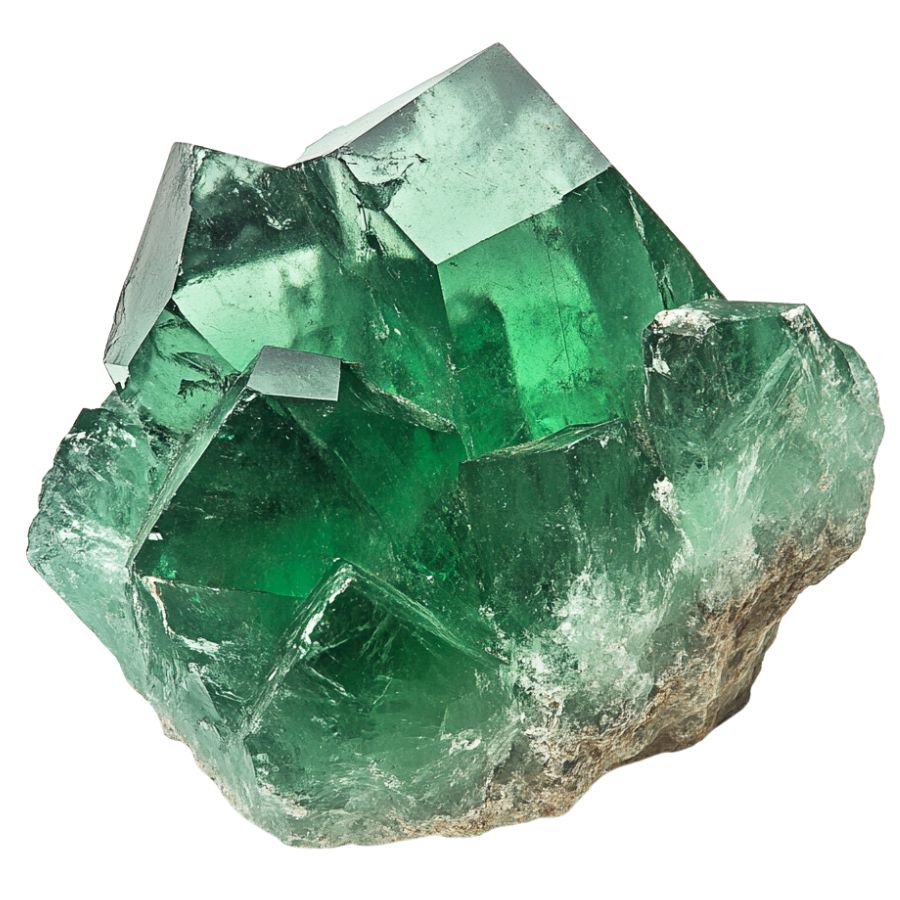
Fluorite comes in a wide range of vibrant colors, including purples, greens, blues, and yellows, and is known for forming in well-defined cubic crystals.
Beyond this, fluorite exhibits fluorescence under ultraviolet light! It can also be used in various industrial applications, including as a flux in steelmaking.
Galena
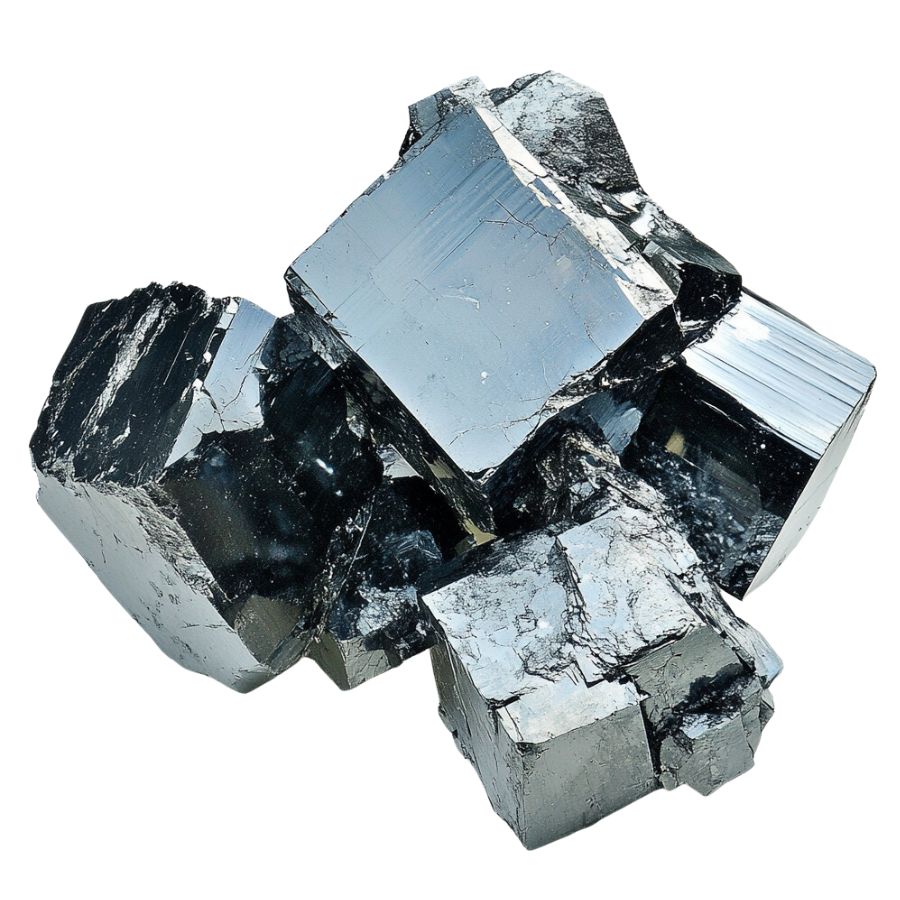
Galena distinguishes itself with a metallic luster and high density, typically found in a cube-like form. It serves as the primary ore of lead, making it important in the metal industry, while its shiny, silver color attracts collectors.
Not only does its appearance make it a subject of interest, but its weight and texture provide tangible lessons in mineral density and metallic properties. Galena also often contains traces of silver, adding to its commercial and educational value.
Corundum
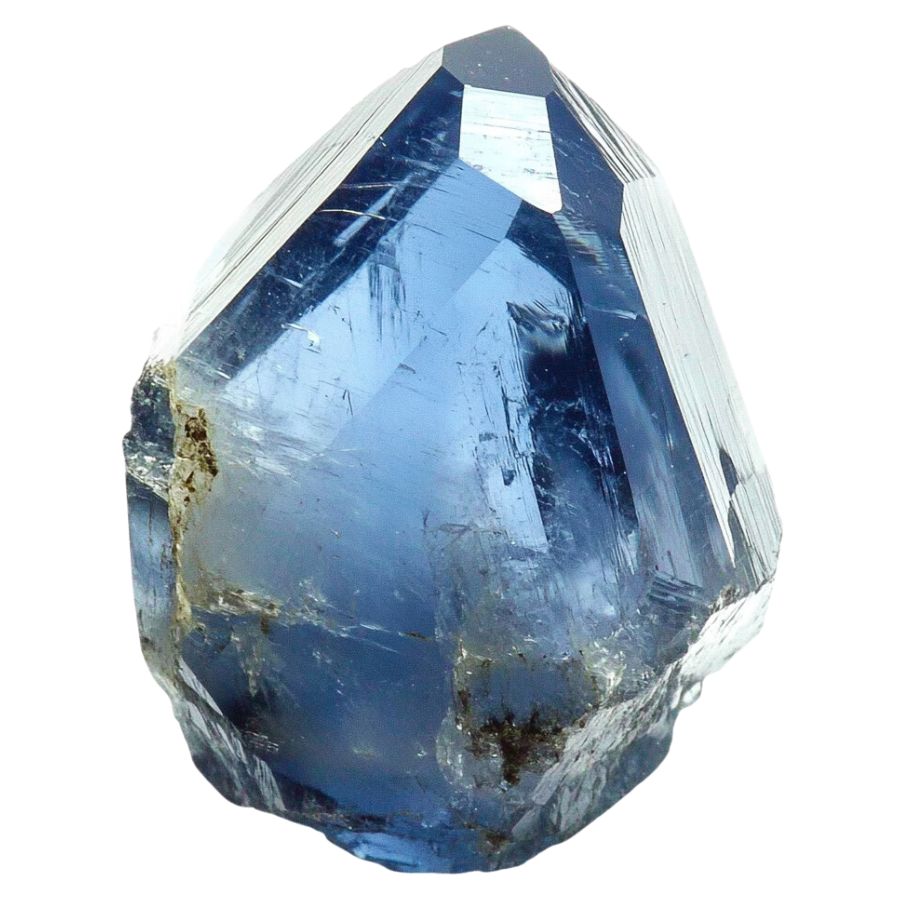
Corundum is a mineral that comes in a variety of colors, though it is typically transparent or gray. Its most famous forms are sapphires and rubies, which are prized for their vibrant blue and red hues.
The mineral is known for its remarkable hardness, ranking just below diamond on the Mohs scale. This durability makes corundum ideal for industrial abrasives and cutting tools, as well as a popular choice for fine jewelry.
Quartz
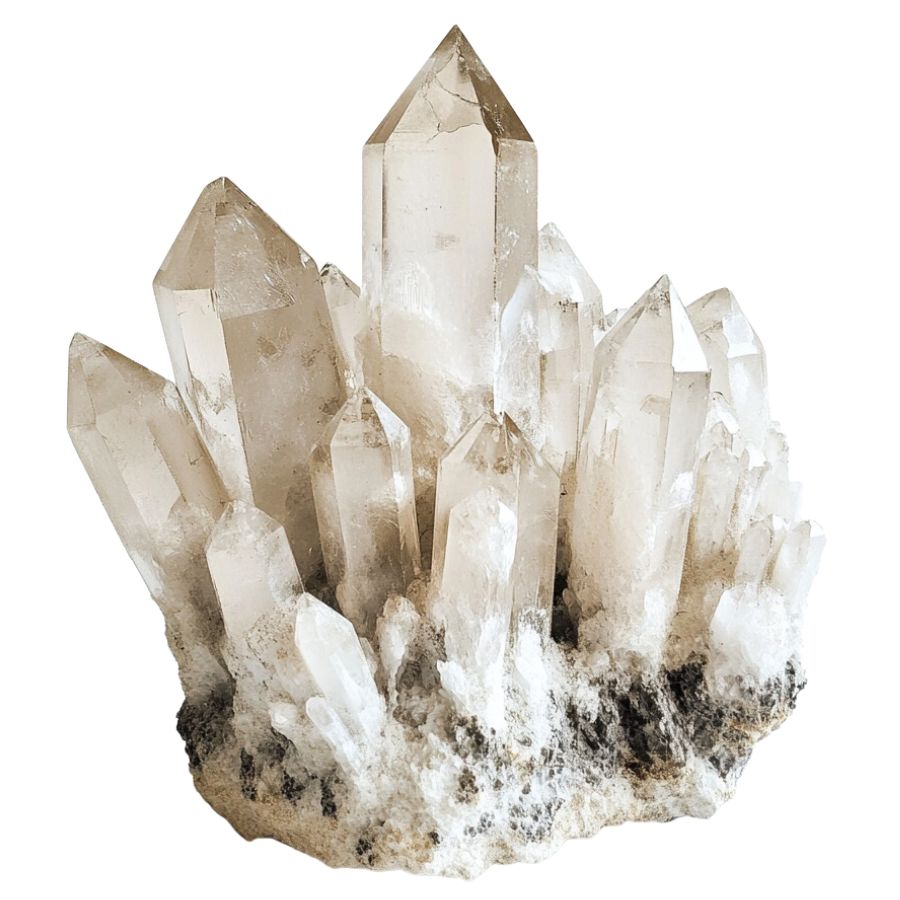
Quartz is among the most common minerals in the Earth’s crust and is prized for its durability and variety. It forms in a wide range of colors and types, from clear rock crystal to purple amethyst.
The mineral is notable for its hardness and durability, which contribute to its use in a variety of applications. Quartz is also popular in the manufacturing of electronics and watches due to its piezoelectric properties, which allow it to convert mechanical pressure into electrical energy.
Pyrite
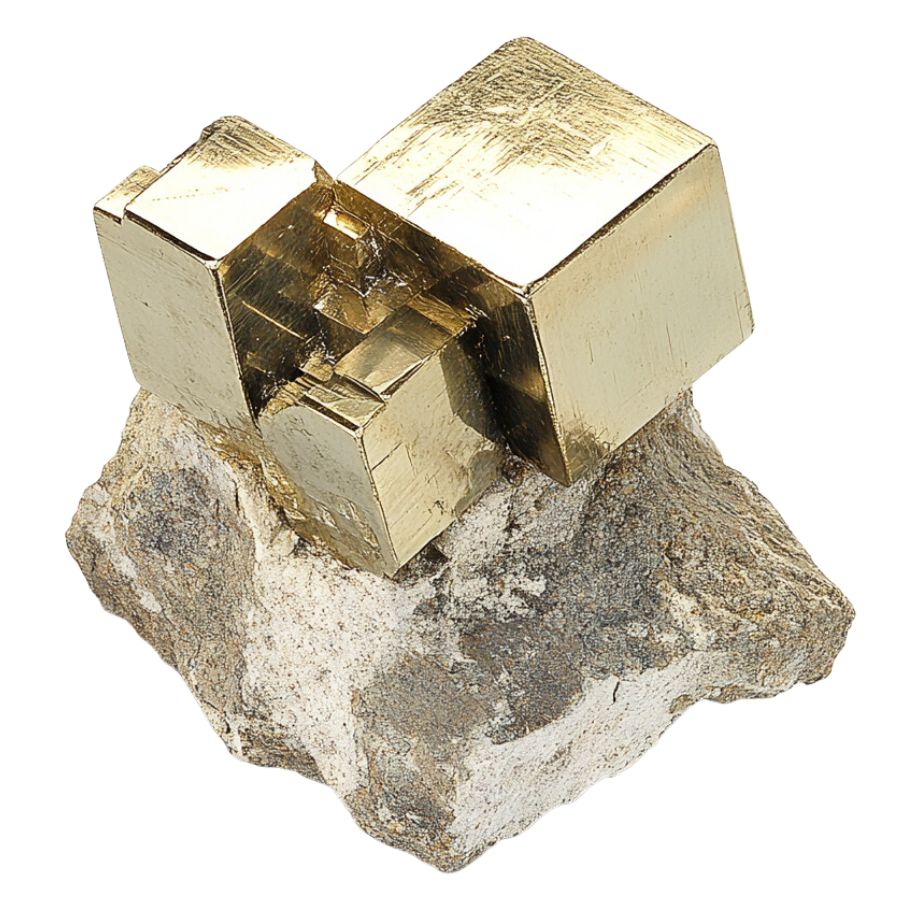
Often mistaken for gold due to its metallic luster and pale brass-yellow hue, pyrite is known colloquially as “fool’s gold.” Its characteristic cube-shaped crystal formations look man-made but are actually completely naturally formed!
Pyrite also has historical importance in producing sulfur dioxide for sulfuric acid production.
Rhodochrosite
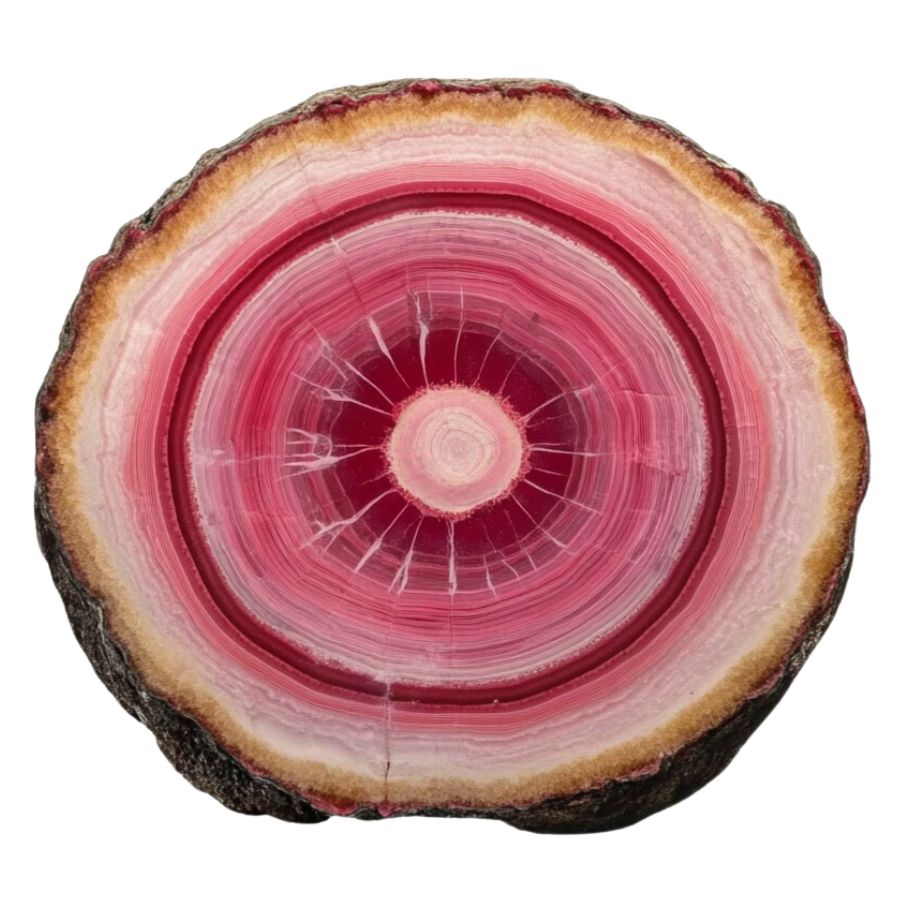
Rhodochrosite stands out with its rich pink and red hues, making it highly desirable as both a mineral specimen and a gemstone.
It typically forms in layered or stalactitic structures, with bands of colors that showcase how it grew over millions of years.
Beyond its beauty, rhodochrosite is significant as the main source of manganese, an essential element used in metal alloys.
Rhodonite
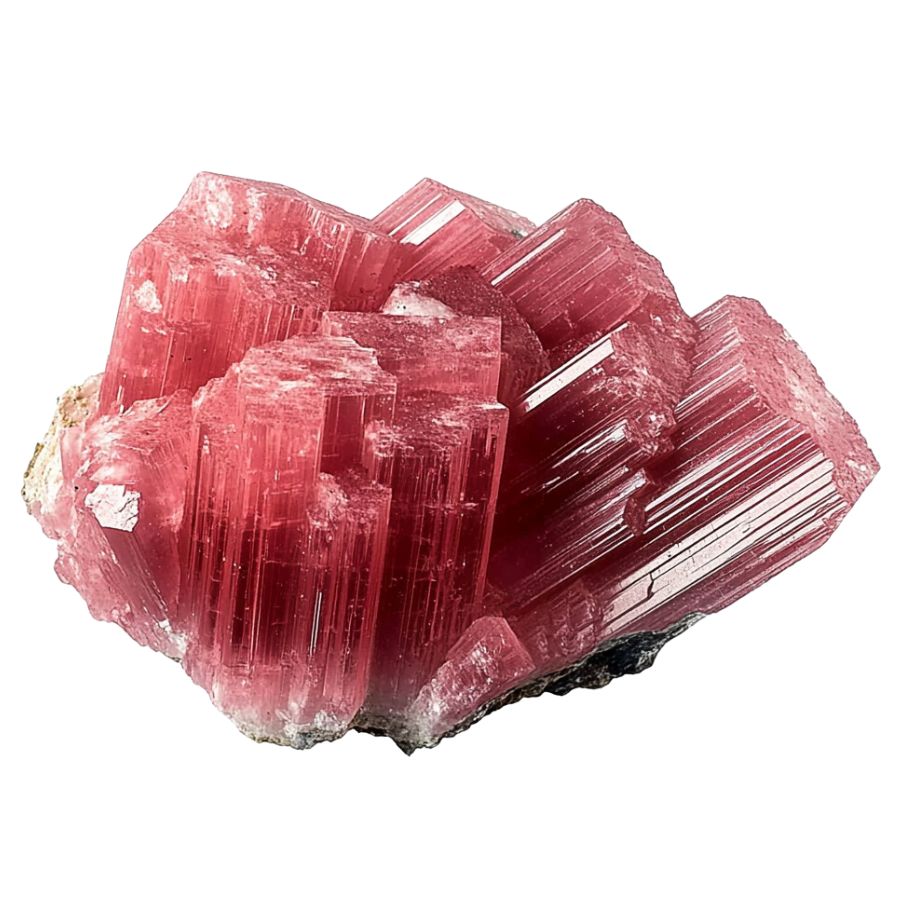
Appreciated for its deep pinks and reds, often complemented by black manganese oxide veins, rhodonite presents a dramatic appearance. It is typically found in metamorphic rocks and is used both as an ornamental stone and in jewelry.
In geology, rhodonite is significant for its role in metamorphic processes and its association with other manganese-rich minerals. It can be found in metamorphosed sedimentary rocks and is sometimes used as an indicator of the presence of manganese deposits.
Vivianite
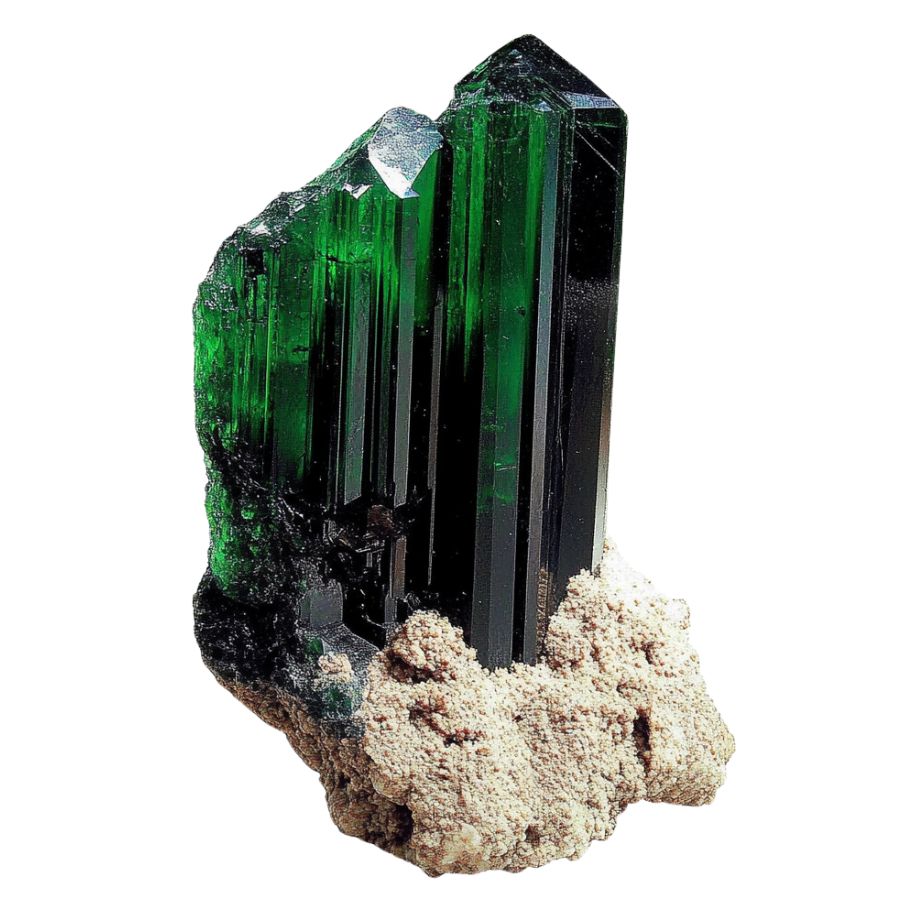
Vivianite, an iron phosphate mineral, emerges in low-oxygen environments like peat bogs or iron-rich deposits. Its striking blue to green color, which can change to a lighter shade over time due to oxidation, makes it a distinctive mineral.
Found in various geological settings, vivianite provides clues about the local conditions and the presence of phosphate deposits.
The Types of Nebraska Crystals You Can Find
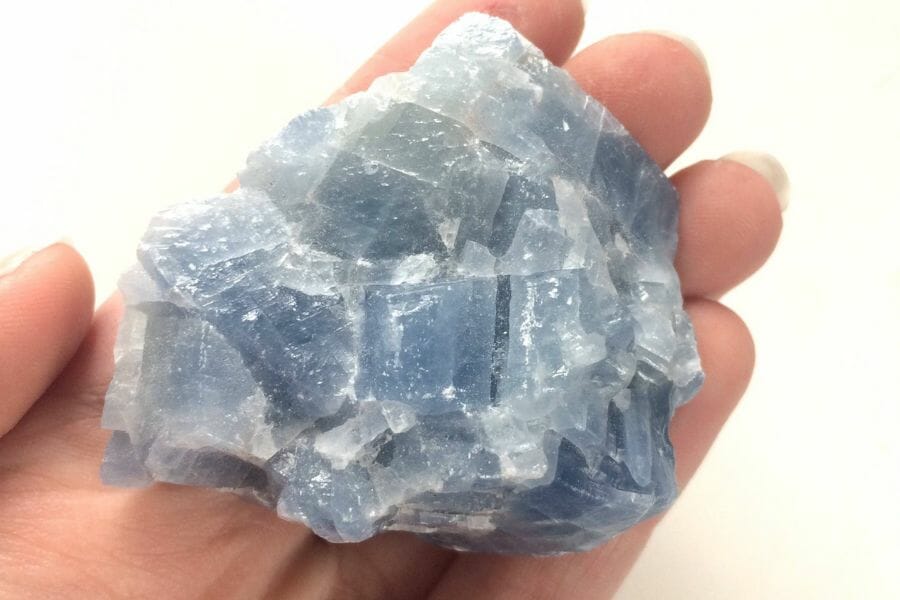
Crystals have long captivated the human imagination with their mesmerizing beauty and awe-inspiring formations. These natural wonders come in various shapes, colors, and sizes, each with unique properties and charm. In Nebraska, the rich geological tapestry has produced various crystals, including exquisite agate, chalcedony, and jasper specimens, among others.
Rare crystals found in Nebraska
- Calcite
- Carnelian
- Opal
- Quartz
More common crystals found here
- Agate
- Chalcedony
- Jasper
What rough crystals look like
When you’re out looking for crystals on your own it’s important to know what you’re looking for. This is what you need to look out for:
Look for exteriors like this
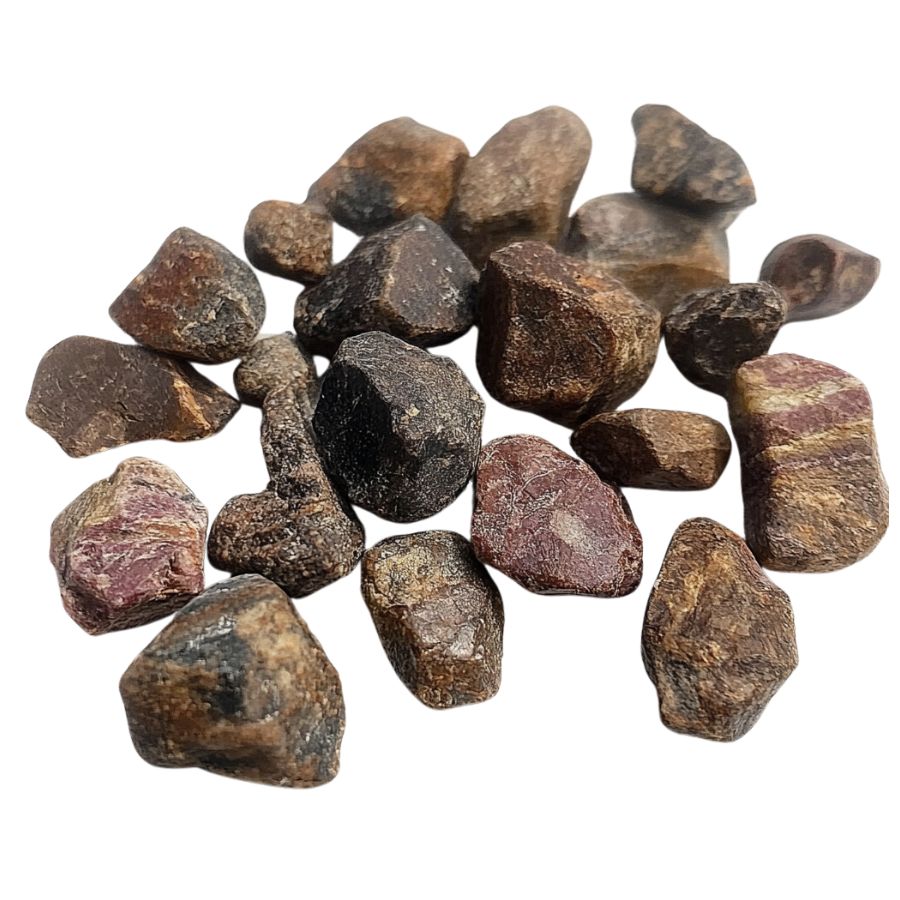
When you’re out searching for crystals in the wild, it’s essential to keep in mind that what you find won’t look like the polished stones you see in stores. One important tip is to consider what certain crystals look like in their raw, natural form.
Without the shine and smooth finish, crystals might appear rough, with jagged edges or earthy tones masking their true beauty. Understanding this can help you spot potential finds that might otherwise be overlooked.
Examine the crystal structure and shape
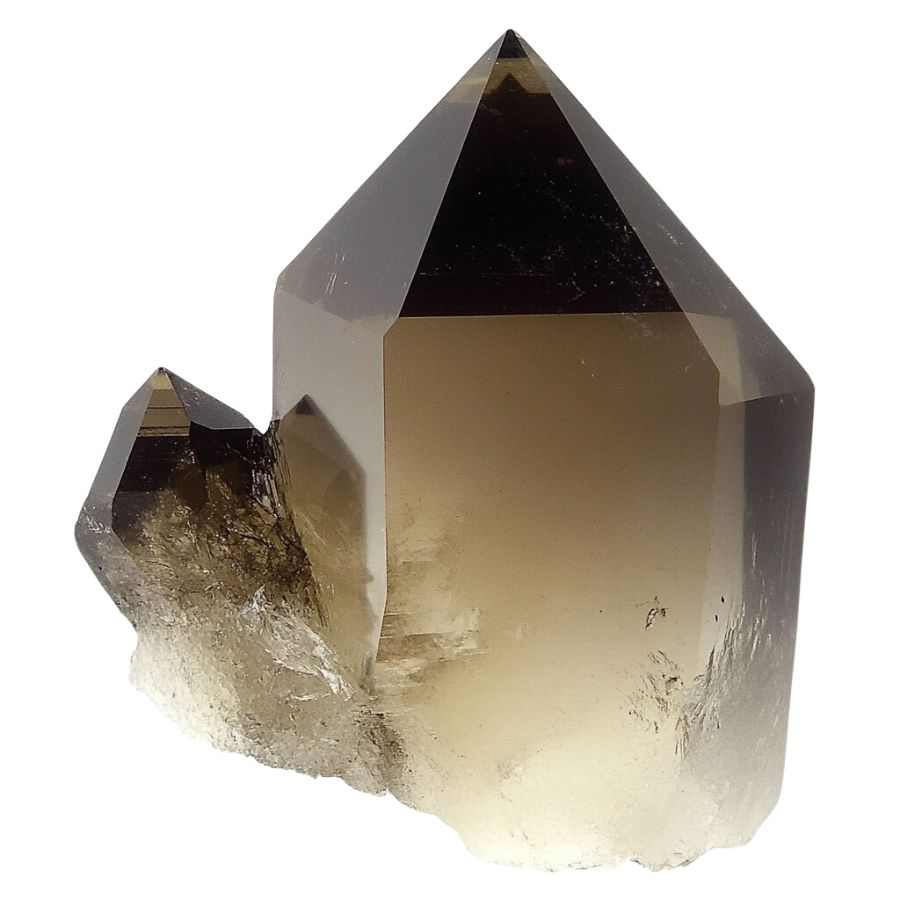
Crystals often form in specific geometric patterns that can be key to identifying them. For example, quartz is known for its hexagonal prisms, while halite typically forms cubic shapes.
By recognizing these distinct patterns, you can differentiate between various types of crystals and better understand what you’ve found.
Observe color
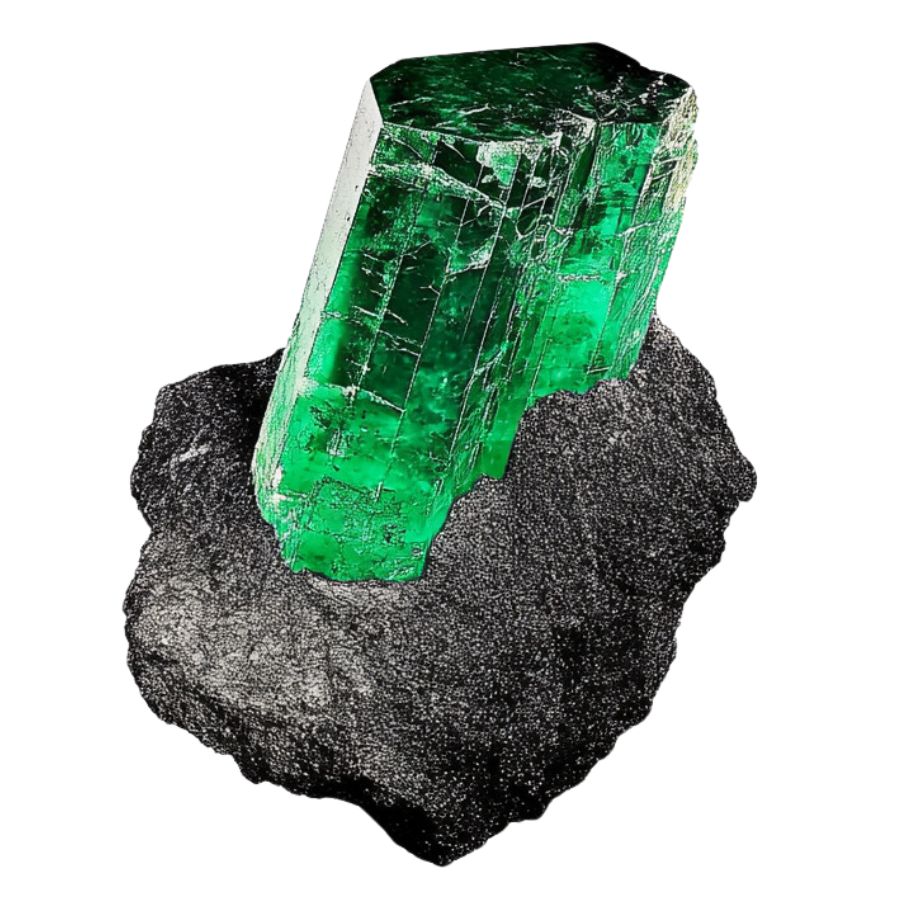
Some crystals are known for their distinct hues, like the deep purple of amethyst or the vibrant green of emerald. However, not all crystals will have strong colors; some may be clear or only slightly tinted.
Check the luster
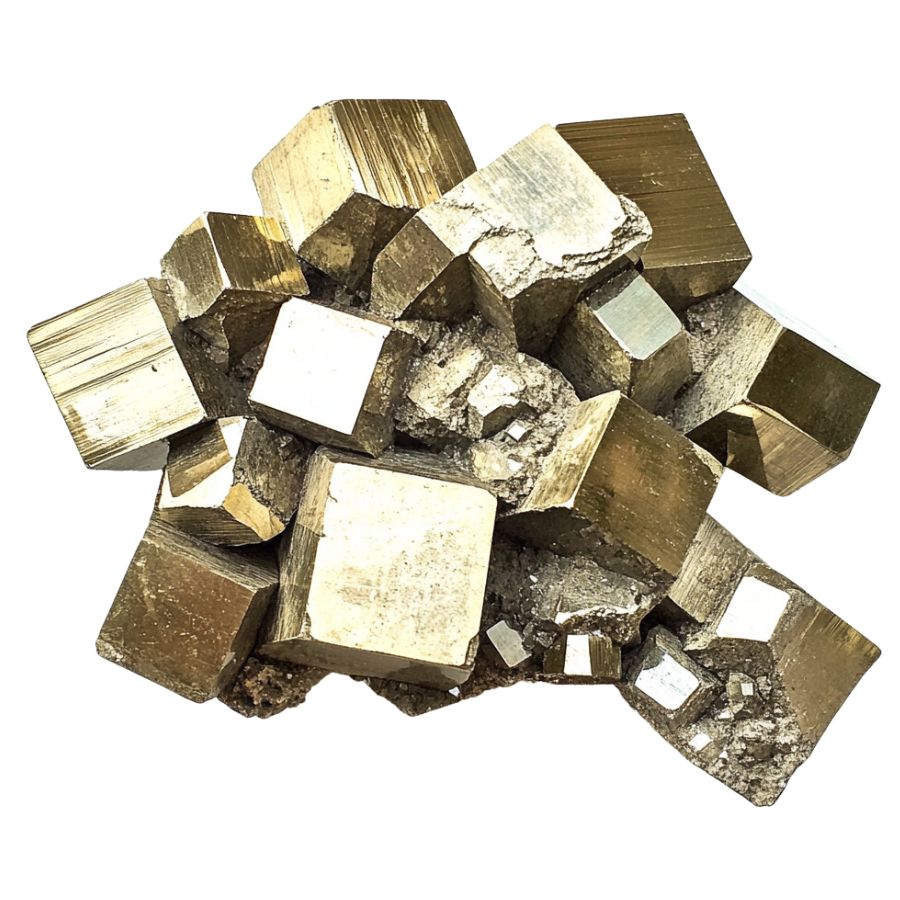
Luster refers to how a crystal’s surface interacts with light. Some crystals might have a shiny, glassy luster, while others may appear metallic or dull. This characteristic can help you determine the type of crystal you’ve found.
However, it’s important to remember that luster isn’t always obvious right away. In some cases, a crystal’s true luster will only become apparent after it’s been cleaned or polished, so keep this in mind as you examine your finds.
Evaluate the transparency
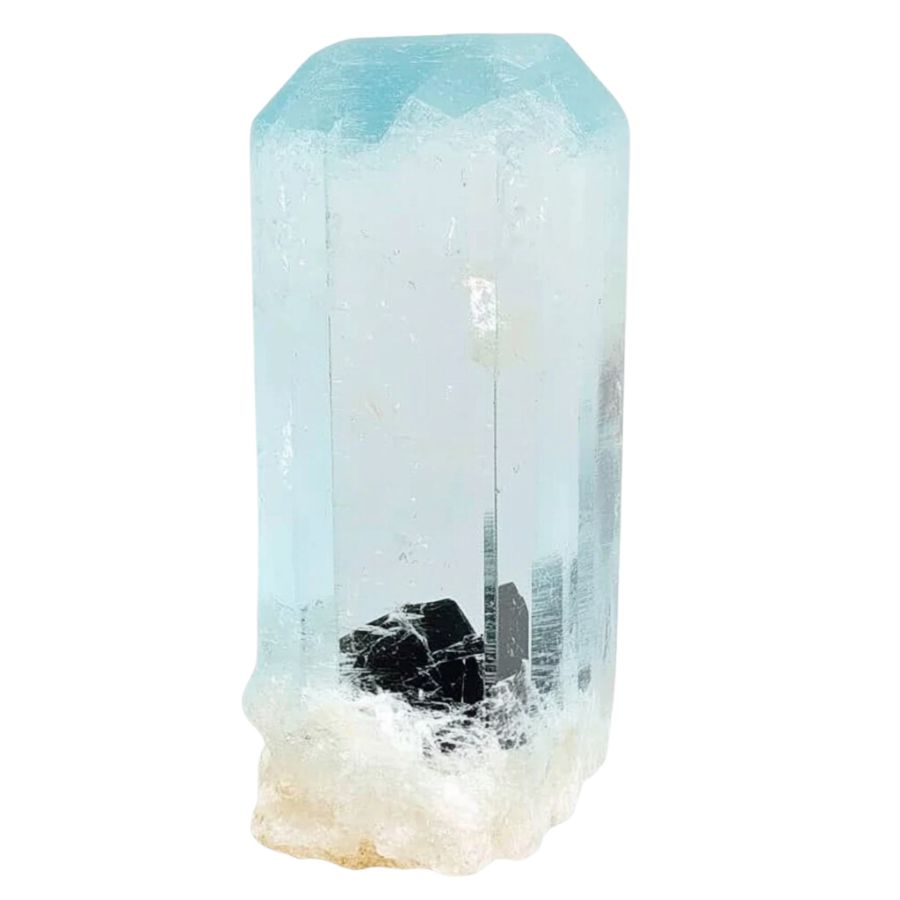
Pay close attention to how much light passes through the crystal. Some crystals are completely clear, allowing light to pass through easily, while others may be opaque and block light entirely.
You might also encounter crystals with translucent edges but opaque centers. These variations in transparency can offer valuable clues about the type of crystal you’ve found, making it easier to identify and appreciate your discovery.
A Quick Request About Collecting
Always Confirm Access and Collection Rules!
Before heading out to any of the locations on our list you need to confirm access requirements and collection rules for both public and private locations directly with the location. We haven’t personally verified every location and the access requirements and collection rules often change without notice.
Many of the locations we mention will not allow collecting but are still great places for those who love to find beautiful rocks and minerals in the wild without keeping them. We also can’t guarantee you will find anything in these locations since they are constantly changing.
Always get updated information directly from the source ahead of time to ensure responsible rockhounding. If you want even more current options it’s always a good idea to contact local rock and mineral clubs and groups
Tips on where to look
Having a better idea of where to look can greatly narrow down your search and increase your chances of finding crystals. By focusing on environments where crystals are likely to be exposed, you can spend less time searching and more time discovering.
Outcrops and Exposed Rock
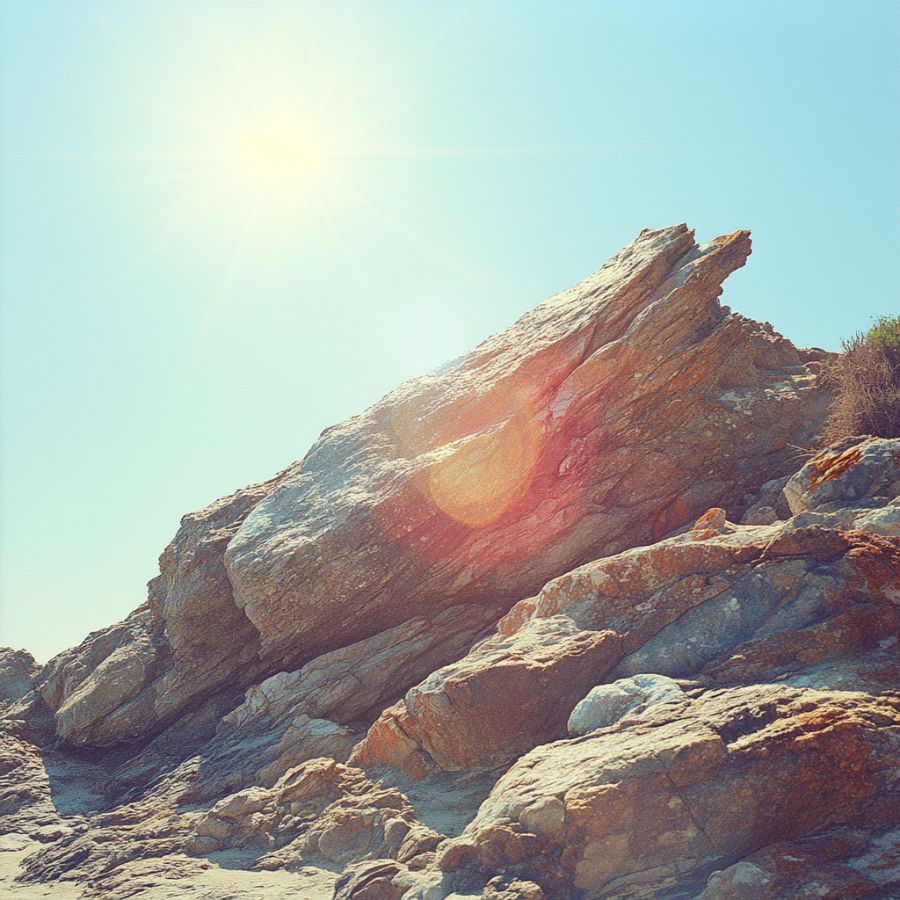
Rocky outcrops are prime locations for finding crystals and minerals. Search along the edges of outcrops, particularly where erosion has worn away the surrounding soil, revealing the rock underneath.
Pay close attention to any visible cracks, crevices, or small cavities within the outcrop, as these are often where crystals develop and can be extracted with minimal effort.
Stream Beds and Gravel Deposits
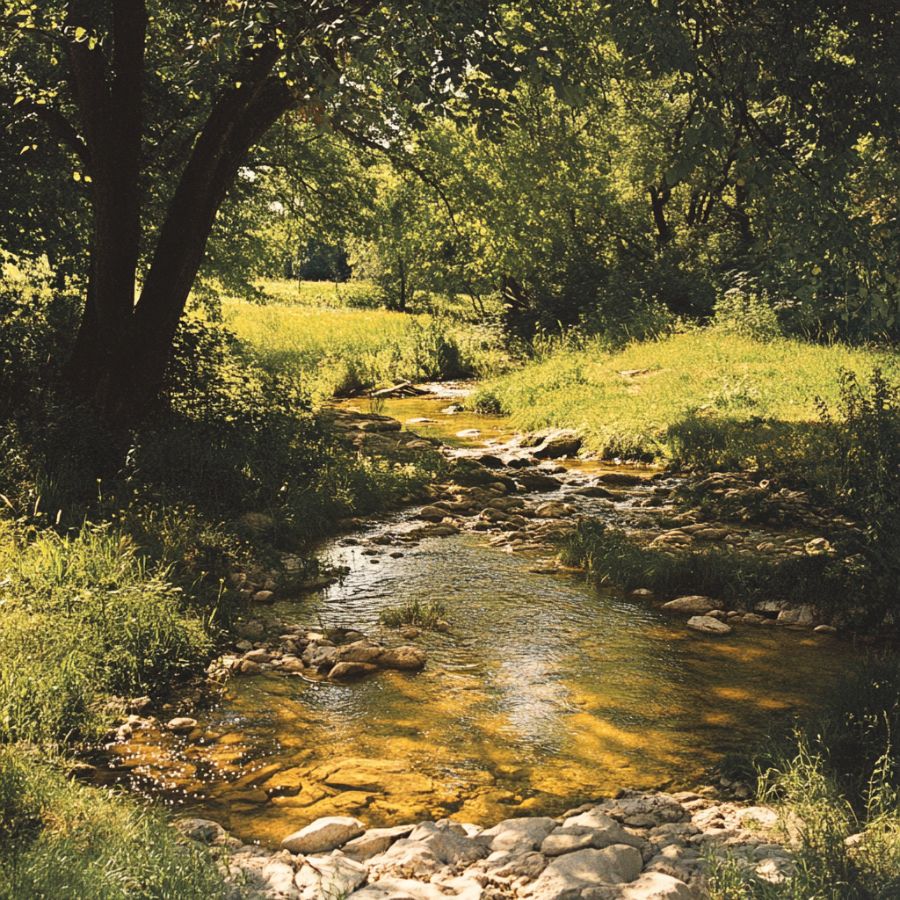
Stream beds are dynamic environments where water flow constantly shapes the landscape. Over time, water can erode rocks upstream, breaking them down and carrying mineral fragments, including crystals, downstream.
When searching in these areas, look for spots where the current has slowed, such as bends in the stream or areas behind large rocks, as these are prime locations for deposits.
Quarries and Mines
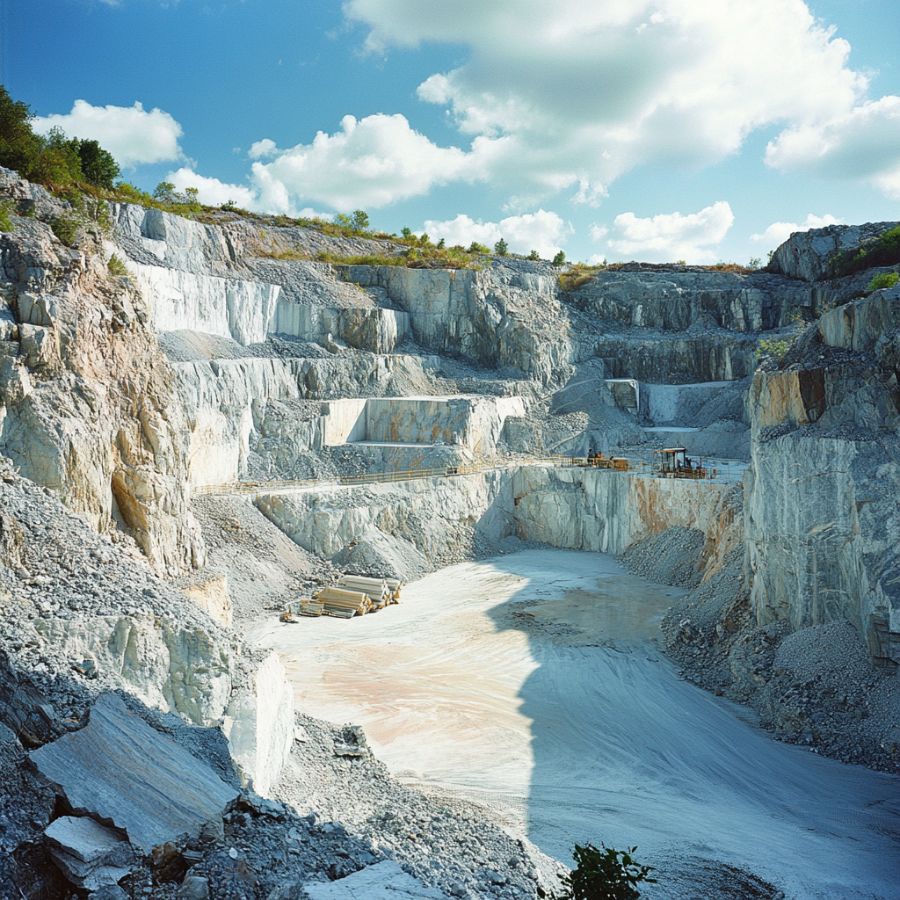
Quarries and mines are excellent places to search for crystals because they expose deep layers of rock that would otherwise be hidden beneath the surface. These sites often contain a variety of minerals and crystals that have been brought to the surface during excavation.
Pay attention to tailings piles, where waste rock is discarded, as they often contain overlooked or broken crystals. Always prioritize safety when exploring these areas and ensure that you have permission to search.
Road Cuts and Construction Sites
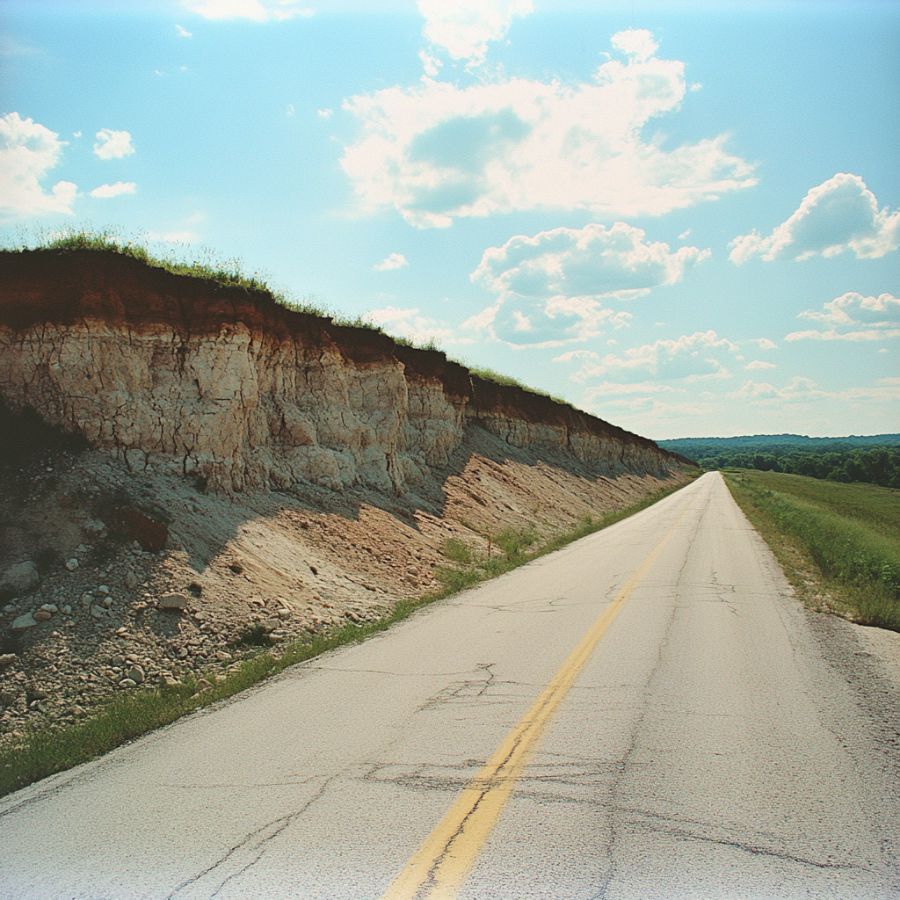
As roads are cut through hillsides or construction projects dig deep foundations, layers of rock and soil that have been undisturbed for millions of years are suddenly exposed.
Look for freshly exposed rock faces, especially where blasting has occurred, as this can create fissures or expose pockets filled with crystals. Be cautious around active construction sites, and always seek permission before exploring.
Mountainous Areas
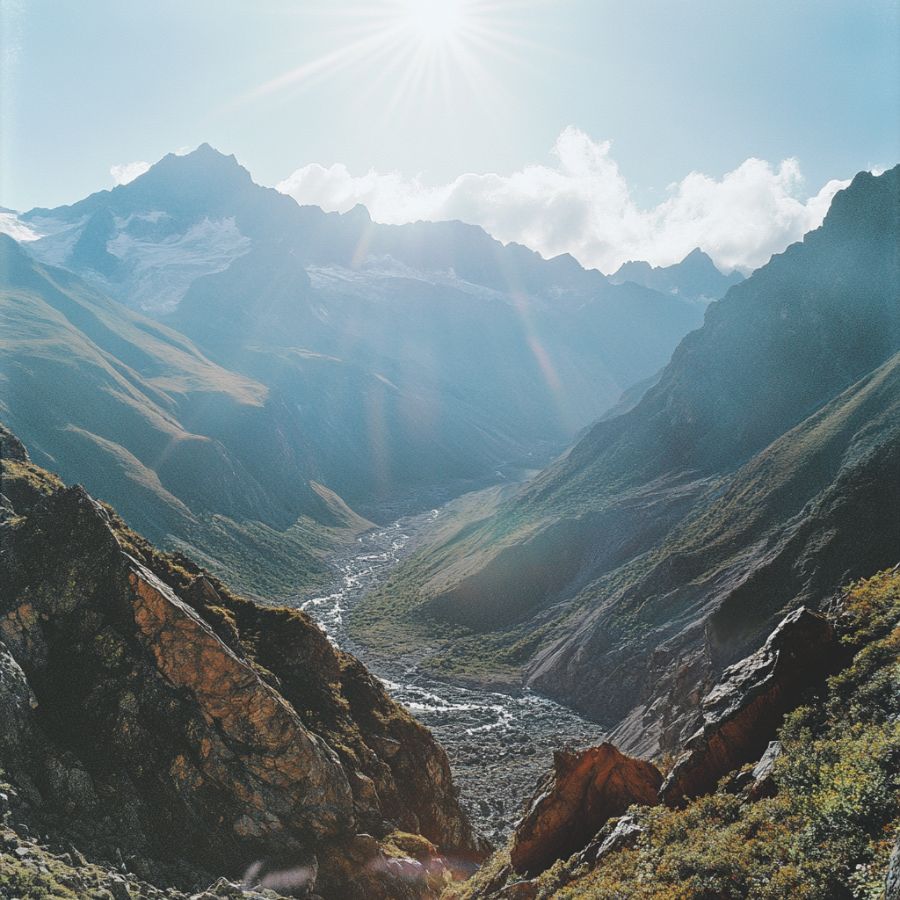
In mountainous regions, erosion caused by wind, rain, and ice can wear away the softer rock, exposing harder crystals that have formed within. Focus on weathered and broken rock formations.
Look for scree slopes, where loose rock has accumulated at the base of cliffs. Additionally, areas near fault lines or volcanic vents are particularly promising, as they often have a higher concentration of minerals.
DON'T MISS OUT ON ANY GREAT FINDS!
While you're out searching for Crystals you're going to find A LOT of other interesting rocks and minerals along the way. The last thing you want to do is toss out something really interesting or valuable. It can be easy to misidentify things without a little guidance.
We've put together a fantastic field guide that makes identifying 140 of the most interesting and valuable rocks and minerals you will find REALLY EASY. It's simple to use, really durable, and will allow you to identify just about any rock and mineral you come across. Make sure you bring it along on your hunt!
Nebraska Crystal Mining Laws And Regulations
Always seek permission before entering private land for crystal hunting or other recreational activity.
For public lands, check with the appropriate land management agency or park authority, such as the Nebraska Department of Natural Resources, to ensure that crystal hunting is permitted in the area.
Remember to research and follow the most current regulations and guidelines local authorities provide before embarking on a crystal hunting adventure in Nebraska.
The Best Locations For Crystal Mining in Nebraska
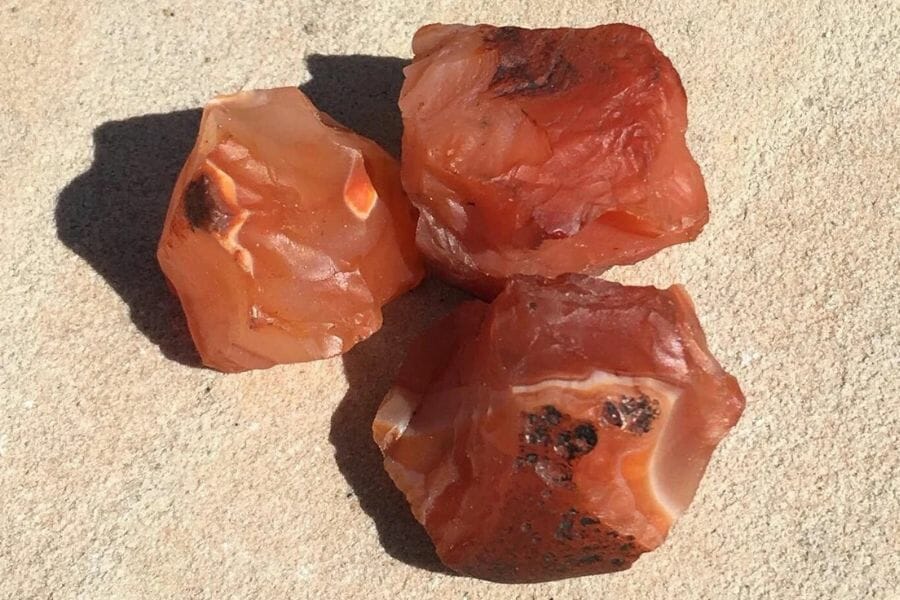
Here are a few of the best crystal-hunting places in Nebraska. We do not doubt that you will have the same success exploring them and discovering unique crystals as we have.
Always Confirm Access and Collection Rules!
Before heading out to any of the locations on our list you need to confirm access requirements and collection rules for both public and private locations directly with the location. We haven’t personally verified every location and the access requirements and collection rules often change without notice.
Many of the locations we mention will not allow collecting but are still great places for those who love to find beautiful rocks and minerals in the wild without keeping them. We also can’t guarantee you will find anything in these locations since they are constantly changing.
Always get updated information directly from the source ahead of time to ensure responsible rockhounding. If you want even more current options it’s always a good idea to contact local rock and mineral clubs and groups
Agate Fossil Beds National Monument
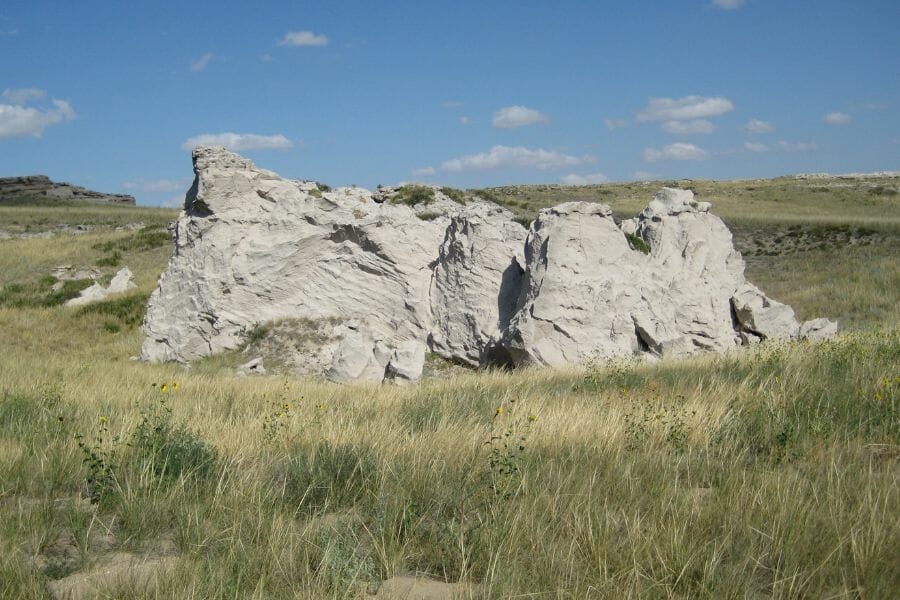
Agate Fossil Beds National Monument, located in the northwestern region of Nebraska, is a remarkable destination combining natural beauty, rich history, and geological significance. Established in 1965, this 3,000-acre park has become an invaluable resource for paleontologists, geologists, and crystal enthusiasts. You should also include this area in your list of places to find gems in Nebraska.
The Agate Fossil Beds preserve a wealth of well-preserved fossils, including those of the Menoceras (a prehistoric rhinoceros) and the Moropus (a large, horse-like mammal). These fossils serve as a testament to the site’s unique paleontological significance.
Visiting Agate Fossil Beds National Monument is a must for anyone interested in the captivating world of crystals, fossils, and geological history. This extraordinary location offers an unforgettable adventure through time, where the wonders of the past are beautifully preserved and continue to inspire awe and curiosity.
Where we found crystals at Agate Fossil Beds National Monument
We have gathered various crystals, such as agate, chalcedony, and jasper, over the Agate Fossil Beds National Monument.
DON'T MISS OUT ON ANY GREAT FINDS!
While you're out searching for Crystals you're going to find A LOT of other interesting rocks and minerals along the way. The last thing you want to do is toss out something really interesting or valuable. It can be easy to misidentify things without a little guidance.
We've put together a fantastic field guide that makes identifying 140 of the most interesting and valuable rocks and minerals you will find REALLY EASY. It's simple to use, really durable, and will allow you to identify just about any rock and mineral you come across. Make sure you bring it along on your hunt!
Hat Creek
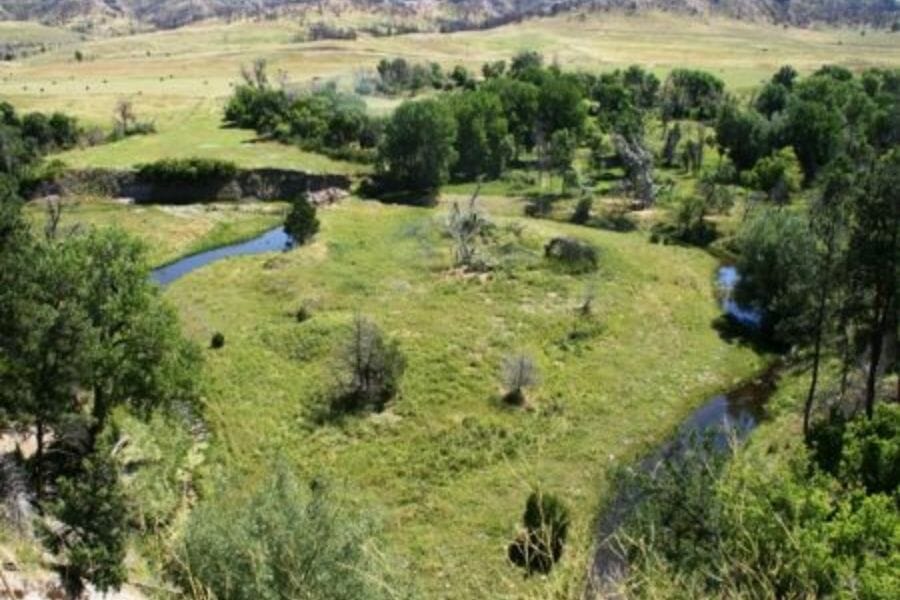
Hat Creek is a veritable playground for crystal enthusiasts, offering a variety of sought-after specimens such as agates, jaspers, and petrified wood. These beautiful and captivating crystals can be discovered along the creek banks and surrounding hills, providing ample opportunities for exploration and discovery. The unique combination of geological features and mineral-rich deposits make Hat Creek an ideal destination for those seeking to connect with nature and uncover hidden treasures.
Embarking on an adventure to Hat Creek promises a rewarding and unforgettable experience for crystal hunters of all levels. The serene landscapes, intriguing geological history, and abundant crystal discoveries make this Nebraska gem a must-visit location for anyone passionate about the natural world.
Where we found crystals at Hat Creek
Across the entire Hat Creek area, crystals of agate and jasper have been found. You can learn how much are crystals worth through this article we’ve written for more information.
Little Nemaha River
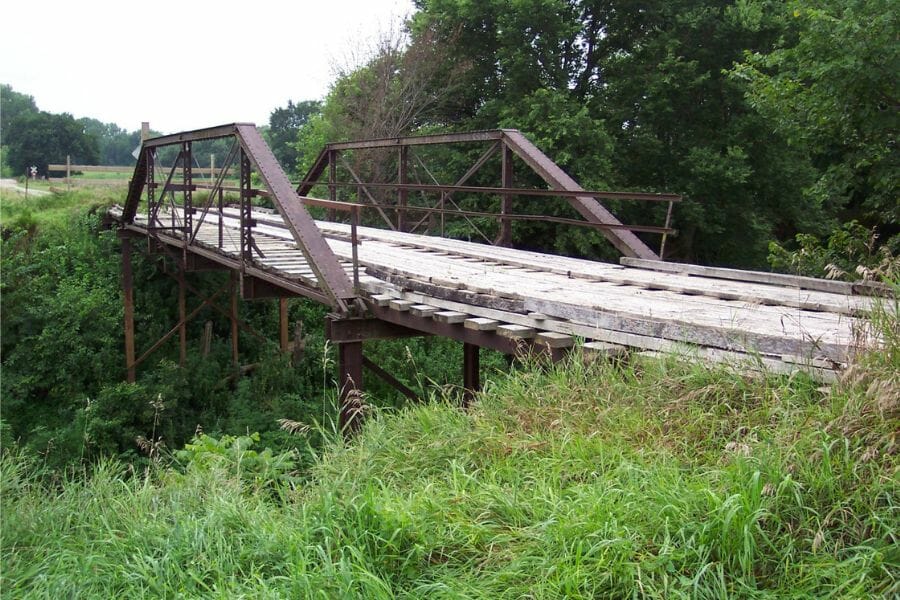
Little Nemaha River, a captivating waterway in southeastern Nebraska, offers a unique blend of natural beauty, historical significance, and geological intrigue. This picturesque river stretches over 60 miles, meandering through lush landscapes, rolling hills, and fertile farmlands embodying the Cornhusker State’s quintessential charm.
Little Nemaha River offers a treasure trove of mineral discoveries. Along its banks and within the surrounding terrain, you can find a variety of crystals, including quartz, calcite, and chalcedony. The river’s alluvial deposits and erosion processes continually uncover new specimens, making it an ideal destination for crystal hunters seeking to explore and unearth nature’s hidden gems.
Where we found crystals at Little Nemaha River
Several gravel beds at the Little Nemaha River contain agate, chalcedony, and jasper crystals.
Snyderville Quarry
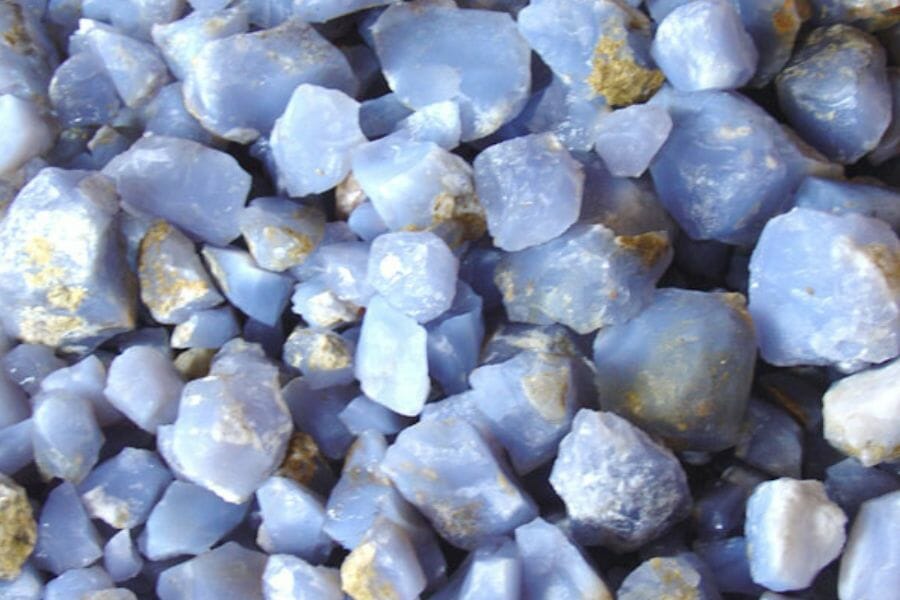
Snyderville Quarry, located in Cass County, Nebraska, is a fascinating site with a storied past and abundant crystal hunting prospects. Once a bustling limestone quarry, Snyderville now stands as a testament to the geological processes that shaped the region over millions of years, leaving captivating mineral treasures for explorers to uncover.
The quarry’s history is rooted in abundant limestone deposits, extensively mined throughout the 19th and 20th centuries. The excavation of these valuable resources contributed to the local economy and revealed a wealth of geological formations and mineral deposits hidden beneath the surface.
Where we found crystals at the Snyderville Quarry
Chalcedony and agate crystals can be found in the Snyderville Quarry.
Waldron Hills
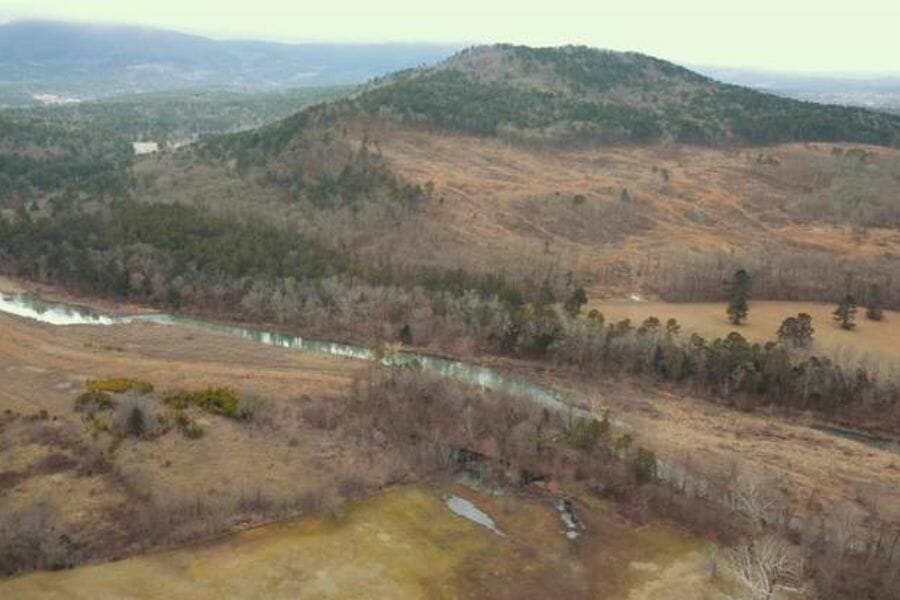
The history of Waldron Hills is a tale of geological evolution, as the area has undergone significant transformations over millions of years. Once submerged beneath a vast inland sea, the region experienced sediment deposition, volcanic activity, and glacial movements, contributing to its unique geological character and the formation of diverse mineral deposits.
For crystal enthusiasts, Waldron Hills offers a veritable treasure trove of mineral specimens waiting to be discovered. The area is renowned for its agate and jasper formations along the hillsides and within the numerous creek beds that traverse the region. Additionally, the unique geological features and erosion processes at work in Waldron Hills continually unveil new specimens, providing ample opportunities for exploration and discovery.
Where we found crystals at Waldron Hills
At Waldron Hills, we had the most success locating agate crystals.
Our Other Favorite Places For Crystal Hunting
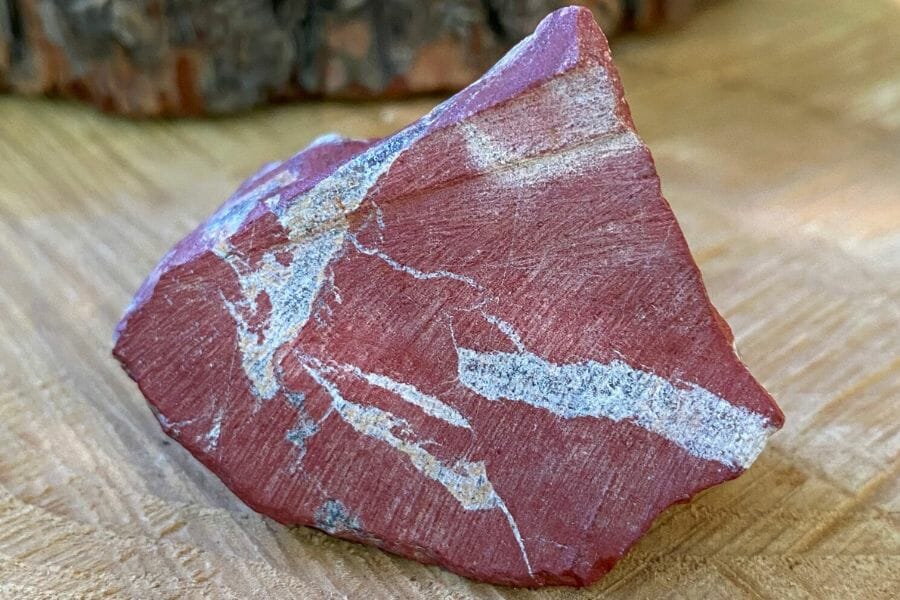
Naturally, the state has many amazing locations where you may search for crystals and find geodes in Nebraska. Below is a list of more possibilities worth considering:
Where you can find crystals for free in Nebraska
Let’s start by discussing a few places you can look without paying. Some places are free to visit even if many attractive places require an entrance fee.
| County | Location |
| Buffalo | Platte River area gravel bars at Kearney for agate, chalcedony, and jasper |
| Cherry | At the regional cuts, draws, hillside surfaces along the Niobrara River and Minnechaduza Creek for agate and jasper |
| Dawes | White River breaks for agate and jasper |
| Dawes | Railroad tracks on ranch road at Crawford for agate and jasper |
| Deuel | All regional surfaces and breaks at Chappell for agate, chalcedony, and jasper |
| Jefferson | Regional gravel pits and stream gravels at Fairbury for agate, chalcedony, and jasper |
| Jefferson | Area gravel pits, quarries, and stream gravels at Steele City for agate, chalcedony, and jasper |
| Morril | Area gravel pits, sandhills, and stream gravels at Bayard for agate and chalcedony |
| Red Willow | Republican River basin at McCook for jasper |
| Richardson | Along Nemaha River at Humboldt or agate |
| Saunders | In sand pits along Platte River and downstream to Louisville and Laplatte at Ashland for agate |
| Sheridan | Area gravels, cut banks, and breaks at Hat Springs for agate, chalcedony, and jasper |
Other great places to dig for crystals
These other fantastic locations are terrific places to look for crystals if you don’t mind spending money on them. Seasons change the costs of these places with potential free entrances.
| County | Location |
| Douglas | Gravels and all regional gravel pits at Platte river for agate, chalcedony, and opal |
| Douglas | In Lyman-Ritchie gravel pit at Waterloo for agate |
| Gage | All regional gravel pits and quarries for calcite and quartz |
| Platte | In gravels and pits surrounding the confluence of the Loup and Platte rivers for agate, chalcedony, and jasper |
The Best Crystal Shops In Nebraska
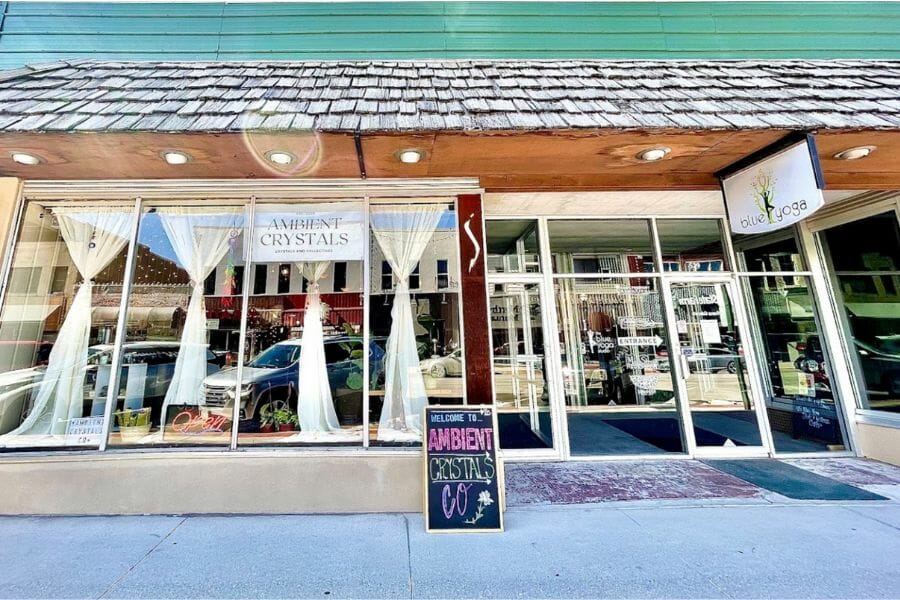
If you’re seeking one-of-a-kind and gorgeous specimens, these are the greatest crystal shops we could discover.
- A Higher Plane – 311 W 3rd St, Grand Island, NE 68801
- Ambient Crystals Co – 529 N Main St Suite #2, Fremont, NE 68025
- Aura Vibes – 109 S Vine St, North Platte, NE 69101
- Awakenings – 3506 N 147th St STE 101, Omaha, NE 68116
- Crystal Lady – 1817 Vinton St #1434, Omaha, NE 68108
- Custom Gems – 8487 Frederick St, Omaha, NE 68124
- Next Millennium Books & Gifts – 3141 N 93rd St, Omaha, NE 68134
- Olde Towne Alchemy – 1919 Central Ave, Kearney, NE 68847
- Peaceful Minds Store – 2308 Cornhusker Rd, Bellevue, NE 68123
- Ravenwood Crystals – 402 W Norfolk Ave, Norfolk, NE 68701
Additional places to find crystals in nearby states
If you’ve already tried all of our recommendations above or are planning a trip out of the state, you should check out our guides for neighboring states:
- Crystals in Colorado
- Crystals in Iowa
- Crystals in Kansas
- Crystals in Missouri
- Crystals in South Dakota
- Crystals in Wyoming
If you have any recommendations we haven’t covered please leave them in the comments below!

